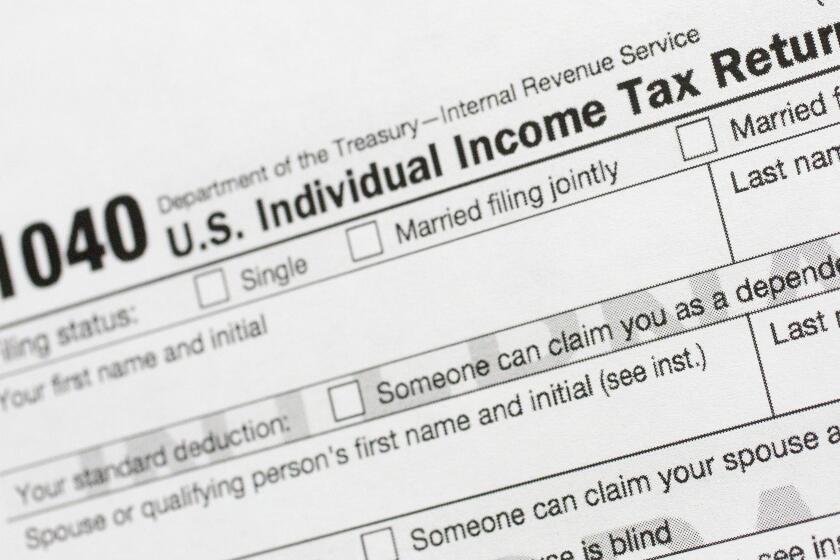A snapshot of income disparity
On the eve of our worst financial crisis since the Depression, the United States was -- from an economic standpoint, at least -- a less equal nation than at any time since the Gilded Age.
The sputtering recovery now underway is producing few, if any, jobs to replace those that have been lost. Meanwhile, a variety of factors continues to push wages and most salaries lower. Thus, we’re likely to emerge from this downturn with even greater disparities in income, wealth and effective tax rates, and the forces pushing us in that direction are particularly strong in Los Angeles County.
We have a pre-recession portrait of American inequality because, in 1992, the Clinton administration asked the Internal Revenue Service to begin tracking the incomes and tax payments of the country’s 400 richest households. During the George W. Bush years, the IRS continued to collect the data, but -- you’ll be shocked to know -- didn’t release it to the public.
Last week, the figures for 2007 were quietly made available, and, as David Cay Johnston, who formerly covered tax policy for the New York Times and now teaches at Syracuse University’s law school, points out, “The incomes of the top 400 American households soared to a new record high in dollars and as a share of all income in 2007, while the income tax rates they paid fell to a record low.”
Between 2006 and 2007, according to the IRS, the average income of the country’s 400 top taxpayers rose 31%, from $263.3 million to $344.8 million. At the same time, their effective income tax rate declined more than half a percentage point, from 17.17% in 2006 to 16.62% in 2007.
That’s all of a piece with trends documented by economists Emmanuel Saez and Thomas Piketty, whose research into global income patterns shows that between 1992 and 2007, America’s 400 richest households increased their average income by 399%, while the bottom 90% of the country’s households gained just 13%. (Those percentages, by the way, reflect inflation-adjusted dollars.)
For a country that prides itself on creating opportunity and encouraging social mobility, those are distressing figures. And if you narrow the focus to Los Angeles County, the picture is even darker. According to figures compiled by the local chapter of the United Way, 1.47 million, or 15%, of the county’s approximately 10.4 million residents are living in poverty, which means an annual income of $22,000 for a family of four. Close to 100,000 of those families are getting by on less than $10,000 a year.
Perhaps worse, 30% of all our full-time workers earn less than $25,000 per year. As a consequence, the percentages of county residents who live in poverty or are counted among the working poor markedly exceed the national averages.
Meanwhile, the national trend toward increasing income inequality is worse in Los Angeles County than in the country as a whole. Over the last two decades, only the top 1% of our salaried workers experienced significant income growth, while men and women earning the county median actually saw their inflation-adjusted hourly income decline by $2.
Here’s a telling example: Over the last 10 years, financial managers enjoyed the largest occupational gains in income. Their average annual salary climbed from $96,302 to $112,632. At the same time, the wages of their executive secretaries and administrative assistants actually fell, from $45,058 to $44,075. Retail sales clerks, janitors, preschool teachers and medical assistants also experienced declining annual incomes.
This economic crisis has erased all the hard-won job growth that occurred in Los Angeles County over the last decade, which makes the prospect of an essentially “jobless recovery” particularly dismaying.
Moreover, two of our most disturbing pre-recession trends are likely to exacerbate things still further: Over the last decade, we’ve lost not only 36.1% of all traditional manufacturing jobs but also 16.3% of the positions in film, television, radio and publishing that are supposed to be a crucial part of the new “knowledge-based” economy. (Our prospects for competing there are further eroded by a school system that continues to graduate a woefully low percentage of our high school students.)
At both the city and county levels, it is increasingly imperative that elected officials do some hard and quick thinking about real educational reform and the need to recapture appropriate manufacturing jobs. Unless some dramatic, proactive steps are taken, L.A. County seems likely to become the least equal region in an increasingly unequal nation.
More to Read
Inside the business of entertainment
The Wide Shot brings you news, analysis and insights on everything from streaming wars to production — and what it all means for the future.
You may occasionally receive promotional content from the Los Angeles Times.










